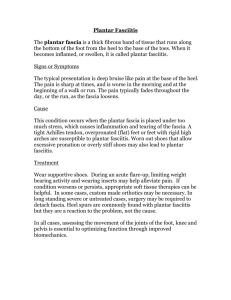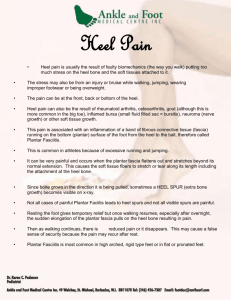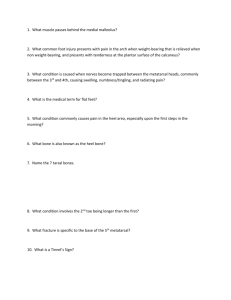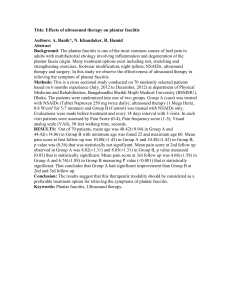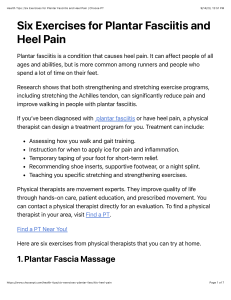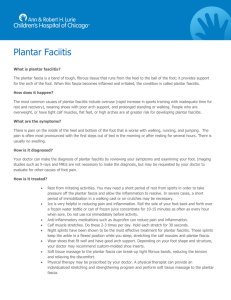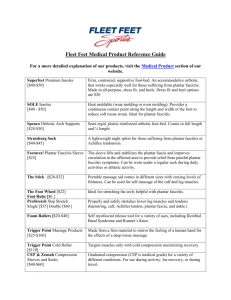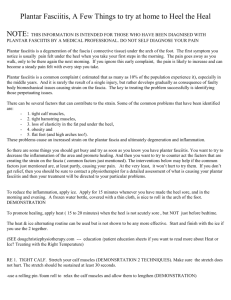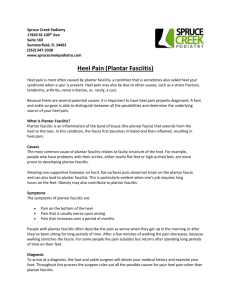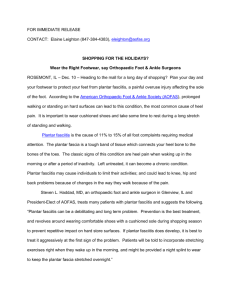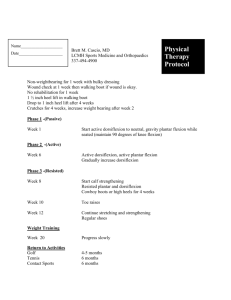Plantar Fasciitis
advertisement
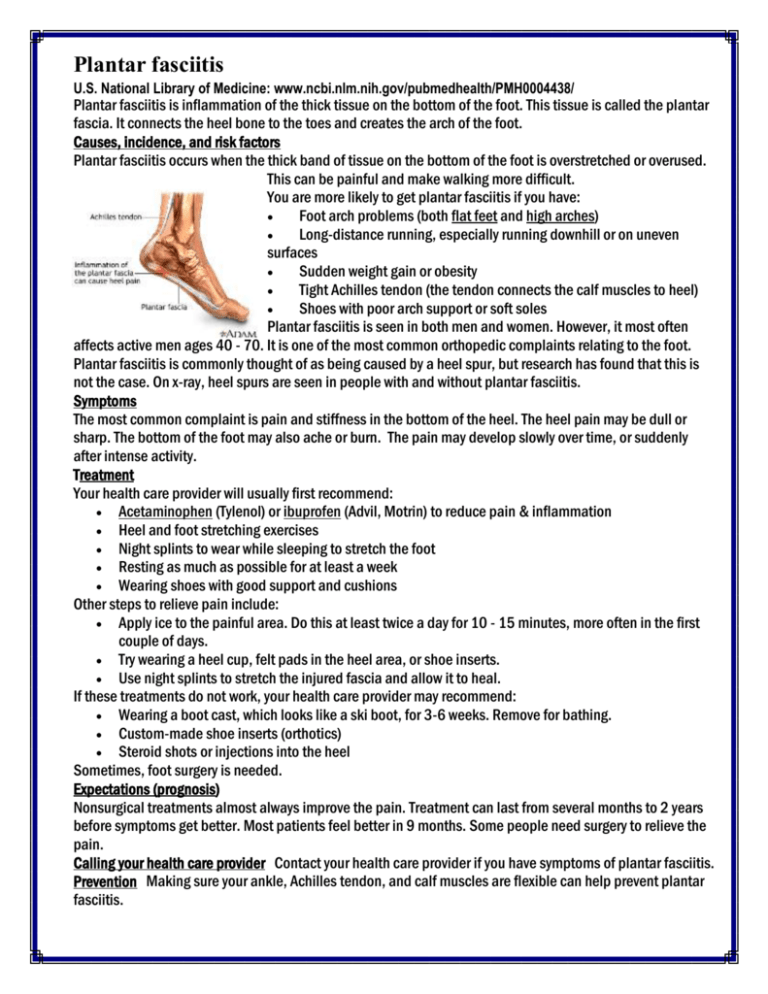
Plantar fasciitis U.S. National Library of Medicine: www.ncbi.nlm.nih.gov/pubmedhealth/PMH0004438/ Plantar fasciitis is inflammation of the thick tissue on the bottom of the foot. This tissue is called the plantar fascia. It connects the heel bone to the toes and creates the arch of the foot. Causes, incidence, and risk factors Plantar fasciitis occurs when the thick band of tissue on the bottom of the foot is overstretched or overused. This can be painful and make walking more difficult. You are more likely to get plantar fasciitis if you have: Foot arch problems (both flat feet and high arches) Long-distance running, especially running downhill or on uneven surfaces Sudden weight gain or obesity Tight Achilles tendon (the tendon connects the calf muscles to heel) Shoes with poor arch support or soft soles Plantar fasciitis is seen in both men and women. However, it most often affects active men ages 40 - 70. It is one of the most common orthopedic complaints relating to the foot. Plantar fasciitis is commonly thought of as being caused by a heel spur, but research has found that this is not the case. On x-ray, heel spurs are seen in people with and without plantar fasciitis. Symptoms The most common complaint is pain and stiffness in the bottom of the heel. The heel pain may be dull or sharp. The bottom of the foot may also ache or burn. The pain may develop slowly over time, or suddenly after intense activity. Treatment Your health care provider will usually first recommend: Acetaminophen (Tylenol) or ibuprofen (Advil, Motrin) to reduce pain & inflammation Heel and foot stretching exercises Night splints to wear while sleeping to stretch the foot Resting as much as possible for at least a week Wearing shoes with good support and cushions Other steps to relieve pain include: Apply ice to the painful area. Do this at least twice a day for 10 - 15 minutes, more often in the first couple of days. Try wearing a heel cup, felt pads in the heel area, or shoe inserts. Use night splints to stretch the injured fascia and allow it to heal. If these treatments do not work, your health care provider may recommend: Wearing a boot cast, which looks like a ski boot, for 3-6 weeks. Remove for bathing. Custom-made shoe inserts (orthotics) Steroid shots or injections into the heel Sometimes, foot surgery is needed. Expectations (prognosis) Nonsurgical treatments almost always improve the pain. Treatment can last from several months to 2 years before symptoms get better. Most patients feel better in 9 months. Some people need surgery to relieve the pain. Calling your health care provider Contact your health care provider if you have symptoms of plantar fasciitis. Prevention Making sure your ankle, Achilles tendon, and calf muscles are flexible can help prevent plantar fasciitis.
